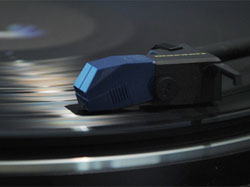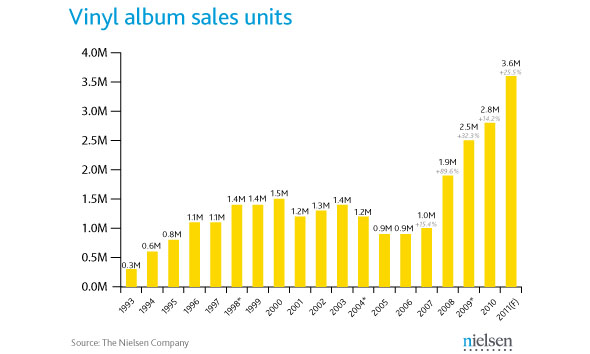During the AES Convention in New York City this past October, I was fortunate enough to attend a lecture given by mastering engineer Scott Hull of Masterdisk Studios.
The lecture focused on creating mixes and masters for vinyl pressing. Though there are those of us who might not even release music on any physical medium these days, there are many who like the look, feel, and most importantly, sound, of music on vinyl.
While there are “rules” associated with recording in the digital domain (keep sample rate and bit depth high, do not go over 0 dBFS, etc), audio engineers don’t necessarily worry about the effects of printing this digital data onto a compact disc. Vinyl records are a much different animal, however.
Those who wish to release music in this format would do well to know how the physical characteristics of these records might affect your sound.
The Physical Disc
We all know that the needle of a player traces along the grooves of the record. The groove is an analog representation of the audio. In the days of mono, the needle only moved side to side while tracing through the groove.
Later, the format was designed so that the stereo information could be read from the up and down movement of the needle. This was done to ensure that older, mono only record players could still play newer stereo records. [1]
With a CD, the music encoded on the outer portion of the disc has the same fidelity as that encoded towards the center of the disc. The same is not true of vinyl records, however. While the record spins at the same rate at the outermost and innermost portion, the amount of vinyl the needle encounters is reduced as it works its way to the center.
Say you took a piece of string and wrapped it around the outer edge of the record. For a 12-inch (diameter) record, the string would be about 36 inches long. If you wrapped string around the innermost groove, you’d have a 4-inch diameter circle and about a 12-inch length of string. The needle traverses both these lengths of strings in the same amount of time.
So if it takes the needle one second to trace the entire circumference of the record, it would be traveling 36 inches per second at the outside and only 12 inches per second towards the middle. This is effectively like recording on analog tape at 30 ips at one end of your album and 15 ips at the other end. [2]
Limitations Of The Format
It is first important to realize that cutting a record literally means just that. Putting your album on wax means scooping out pieces of the material. The louder your material, the more room the needle needs to move.
If your material is too loud, it could cut through to the next adjacent groove. Another consequence of this is the inverse relationship between groove size and the number of grooves you can fit on a record. The wider the grooves, the fewer you can fit. This means the louder your music, the less of it you can fit on one side.
Keeping low frequency information panned down the center will help reduce the motion of the needle and keep your playback clean. An effect like stereo chorus on a bass guitar would wreak havoc.
Don’t try to fit too much material on a disc. As noted earlier, the stuff in the center can sound a bit nasty. If possible, reserve the first tracks for the more complex program material, and the later tracks for less harmonically dense music.
Self-mastered releases are competing more and more with professional mastering houses and producing similar results. Sending your mastered audio to a pressing plant for duplication may result in a release with sub-par audio quality.
For a vinyl release, it is recommended to create your own masters only as a reference for a mastering engineer who understands what will and won’t translate to vinyl. They’ll be able to create the best version of your release for the medium without sacrificing the quality you strove for.
—
[1] The way stereo information is encoded onto vinyl is more complicated than simple Left and Right channels. The term “mono information ” refers to L+R, while the term “stereo information” refers to L-R. This type of encoding is similar to mid-side processing.
[2] The numbers used here are created arbitrarily to illustrate the point.
—
After receiving his bachelor’s degree from Berklee College of Music and a master’s degree in composition from Duquesne University, Barak Shpiez (www.spearheadaudio.com) composed music for television, advertising, and film in Los Angeles. Through partnerships with publishers such as Jingle Punks, Barak’s music has been featured on television programming on MTV, The History Channel, E!, and advertisements for ESPN, Bravo, and more. He is a member of the American Federation of Musicians and the Audio Engineering Society.
Be sure to visit the Pro Audio Files for more great recording content.

















